There’s something effortlessly beautiful about trailing plants. Their cascading vines and lush green leaves bring a touch of nature’s elegance to any interior — whether they’re hanging from ceiling baskets, draping over bookshelves, or adorning window sills. The best part? Many trailing houseplants are surprisingly easy to care for, even if you don’t have a green thumb.
In this detailed guide, we’ll explore the easiest trailing plants to grow indoors, how to care for them, and where they look best in your home. These plants don’t just add charm — they also purify the air and create a calming, cozy vibe.
Why Choose Trailing Indoor Plants?
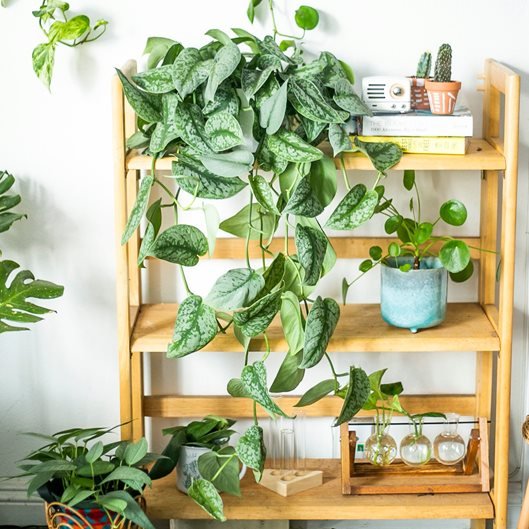
Trailing plants (also known as cascading or vining plants) are among the most rewarding indoor greenery to grow because:
- They add vertical interest, transforming plain walls or shelves into lush displays.
- Most varieties are low-maintenance and adapt well to indoor conditions.
- They can improve indoor air quality by filtering toxins.
- Many are easy to propagate, so one plant can become many.
From bright-light lovers to shade-tolerant species, there’s a trailing plant for every home environment.
1. Pothos (Epipremnum aureum)
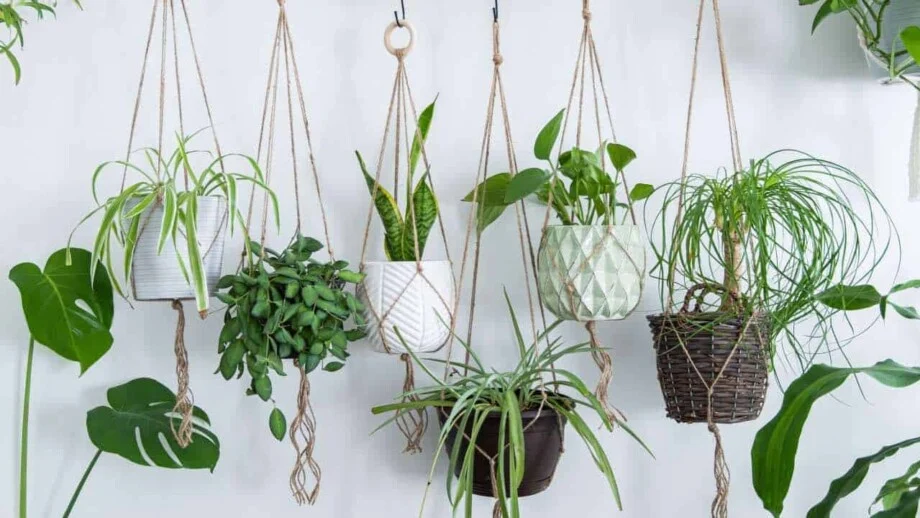
Why it’s easy: Pothos, also known as “Devil’s Ivy,” is practically indestructible. It thrives in low to bright indirect light and tolerates occasional neglect.
Care tips:
- Water only when the top inch of soil feels dry.
- It grows well in normal room humidity.
- Trim regularly to encourage bushier growth.
Bonus: You can grow pothos in both soil and water. Just place a cutting in a jar of clean water, and it will root easily.
Best varieties: Golden Pothos, Marble Queen, Neon Pothos, and Jade Pothos.
Where to display: Hanging baskets, high shelves, or trailing down a bookcase for a natural, jungle-inspired look.
2. Heartleaf Philodendron (Philodendron hederaceum)
Why it’s easy: A classic favorite, the heartleaf philodendron adapts to almost any indoor space. Its glossy, heart-shaped leaves and graceful vines grow quickly, even in low light.
Care tips:
- Keep soil slightly moist but not soggy.
- Avoid direct sunlight, which can scorch leaves.
- Fertilize lightly every 4–6 weeks during spring and summer.
Bonus: It’s one of the best trailing plants for beginners because it bounces back easily from under- or overwatering.
Where to display: Ideal for hanging planters near windows or trailing from tall furniture.
3. English Ivy (Hedera helix)
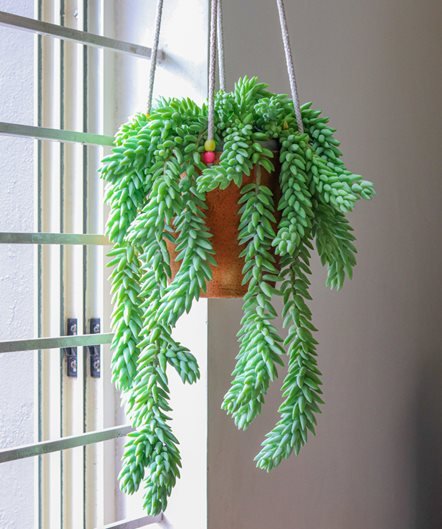
Why it’s easy: English ivy is a timeless indoor vine with beautiful lobed leaves that adapt to different conditions. It’s fast-growing and can trail beautifully from shelves or window boxes.
Care tips:
- Prefers bright, indirect light but tolerates moderate shade.
- Let the top layer of soil dry between waterings.
- Mist occasionally to maintain humidity.
Bonus: It’s a great air purifier and can help reduce mold in humid spaces.
Where to display: Hanging baskets, windowsills, or trained along trellises indoors.
4. String of Hearts (Ceropegia woodii)
Why it’s easy: This delicate, romantic plant produces tiny heart-shaped leaves with silver marbling — perfect for hanging pots. Despite its fragile look, it’s hardy and drought-tolerant.
Care tips:
- Loves bright, indirect light.
- Allow soil to dry completely between waterings.
- Avoid overwatering — its tuberous roots store moisture well.
Bonus: It grows quickly and looks stunning cascading several feet long.
Where to display: In a hanging basket near a bright window or high shelf where its long vines can spill gracefully downward.
5. Spider Plant (Chlorophytum comosum)
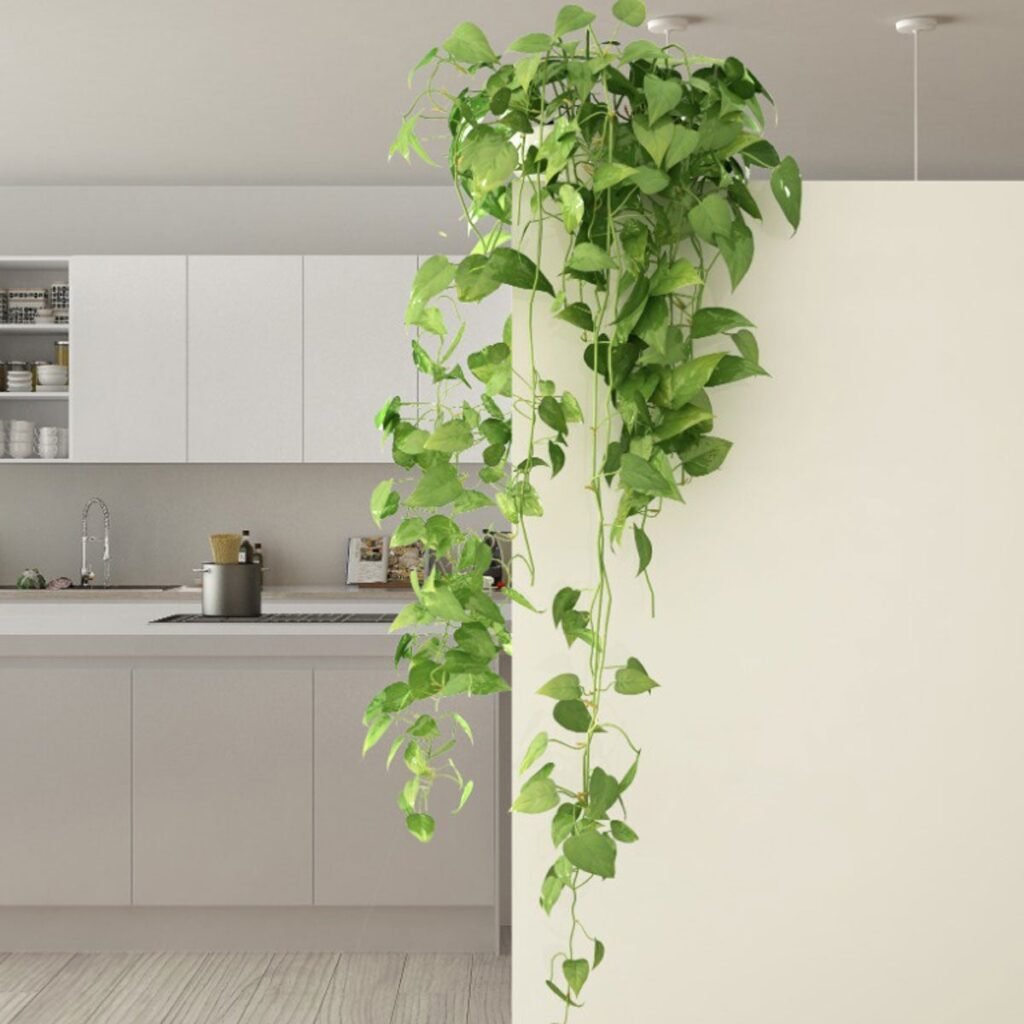
Why it’s easy: Few houseplants are as resilient as the spider plant. Known for its arching leaves and baby “spiderettes,” this plant thrives even in less-than-ideal conditions.
Care tips:
- Bright to moderate indirect light works best.
- Water once a week, allowing the soil to dry between waterings.
- Cut off baby offshoots to propagate new plants.
Bonus: It’s pet-friendly and one of NASA’s top-rated air-purifying plants.
Where to display: Hanging baskets, plant stands, or atop cabinets where the offshoots can cascade naturally.
6. String of Pearls (Senecio rowleyanus)
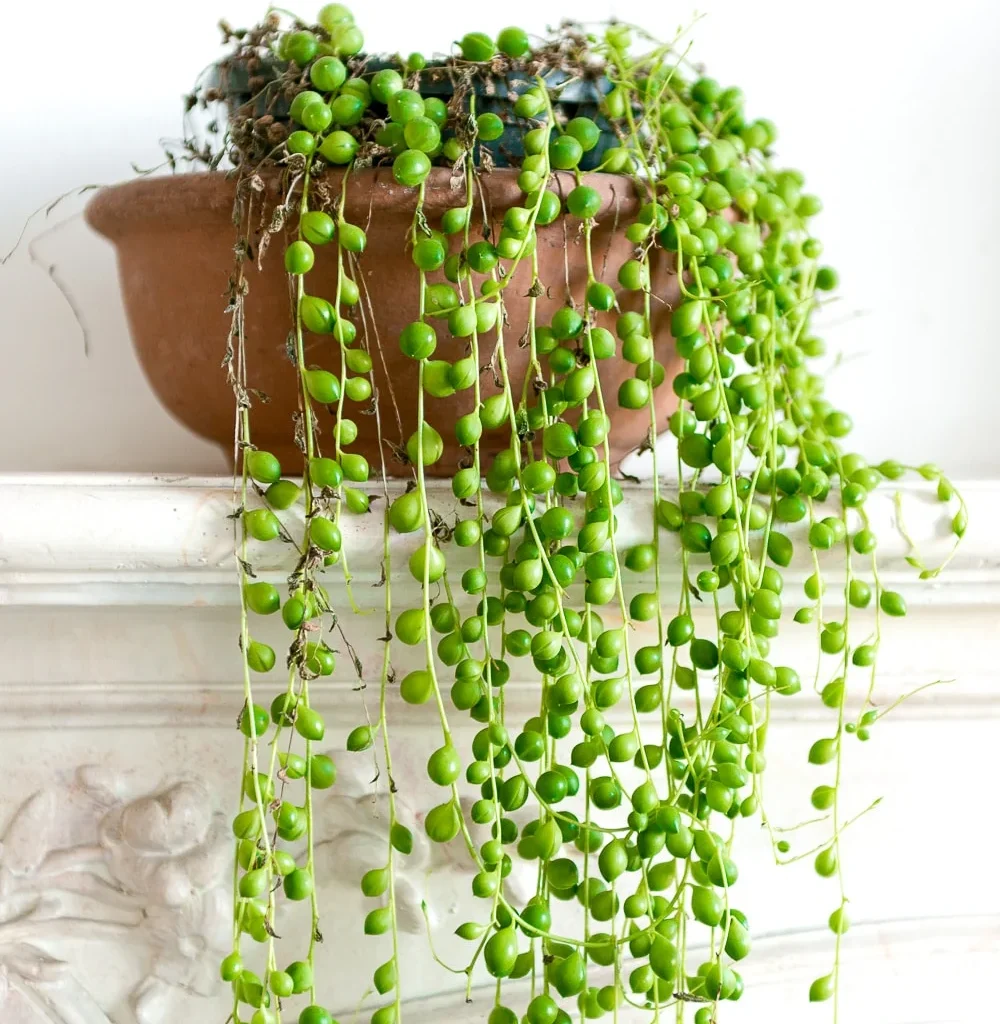
Why it’s easy: A succulent with a twist, this plant’s round, pearl-like leaves make it one of the most visually striking trailing plants for indoors.
Care tips:
- Needs bright, indirect light — or a few hours of morning sun.
- Water sparingly; allow soil to dry completely before watering again.
- Use a cactus or succulent mix for proper drainage.
Bonus: Each “string” can grow several feet long, making it perfect for modern minimalist spaces.
Where to display: Hanging planters or tall shelves — just ensure it gets enough light.
7. Tradescantia Zebrina (Wandering Jew)
Why it’s easy: With its purple-and-silver striped leaves, this plant adds vibrant color and texture to any space. It’s hardy and fast-growing, making it an excellent choice for beginners.
Care tips:
- Prefers bright, filtered light for vibrant leaf color.
- Water when the soil’s top inch is dry.
- Pinch off growing tips to encourage fuller vines.
Bonus: Very easy to propagate — simply place stem cuttings in water or soil.
Where to display: Near bright windows, hanging planters, or as a trailing desk accent.
8. String of Turtles (Peperomia prostrata)
Why it’s easy: This adorable trailing plant features tiny, patterned leaves that resemble turtle shells. Despite its exotic look, it’s beginner-friendly.
Care tips:
- Prefers bright, indirect light.
- Keep soil evenly moist but not soggy.
- Likes moderate humidity but tolerates normal indoor levels.
Bonus: Compact and slow-growing, so it won’t overrun small spaces.
Where to display: Terrariums, small hanging pots, or as a desktop accent.
9. Hoya Linearis (Wax Plant)
Why it’s easy: Hoyas are known for their thick, waxy leaves and star-shaped flowers. The Hoya linearis variety trails beautifully with soft, narrow leaves that look elegant indoors.
Care tips:
- Bright, indirect light is best.
- Water only when soil is dry to the touch.
- Provide good airflow and occasional misting.
Bonus: With proper care, it blooms with fragrant, creamy-white flowers.
Where to display: Hanging baskets near east-facing windows.
10. Peperomia Hope (Peperomia tetraphylla)
Why it’s easy: Compact and low-maintenance, Peperomia Hope features thick, round leaves that trail gracefully from small pots.
Care tips:
- Medium to bright indirect light works best.
- Water when soil feels dry halfway down.
- Avoid overwatering — roots prefer to stay slightly dry.
Bonus: Its semi-succulent nature makes it drought-tolerant and resilient to occasional neglect.
Where to display: On floating shelves, window ledges, or plant stands.
Bonus Tip: How to Keep Trailing Plants Healthy Indoors
Even though these plants are easy to grow, a few simple practices will keep them thriving and lush year-round:
- Rotate pots every few weeks so all sides get equal light exposure.
- Trim and prune regularly to maintain shape and prevent legginess.
- Fertilize monthly during the growing season (spring and summer).
- Wipe leaves clean to allow proper photosynthesis and prevent dust buildup.
- Propagate regularly to keep your plant collection growing and share cuttings with friends.
Final Thoughts
Trailing plants are among the easiest and most rewarding indoor plants to grow. They don’t just beautify your home — they add movement, texture, and life to your living space. Whether you love the lush green vines of pothos, the delicate strands of string of pearls, or the playful tendrils of spider plants, each brings a unique charm that enhances your interior décor.
Best of all, these low-maintenance climbers thrive with minimal care — making them perfect for both seasoned plant lovers and beginners looking to green up their homes.
So pick your favorites, hang them high, and let nature’s artistry trail through your home with effortless grace.
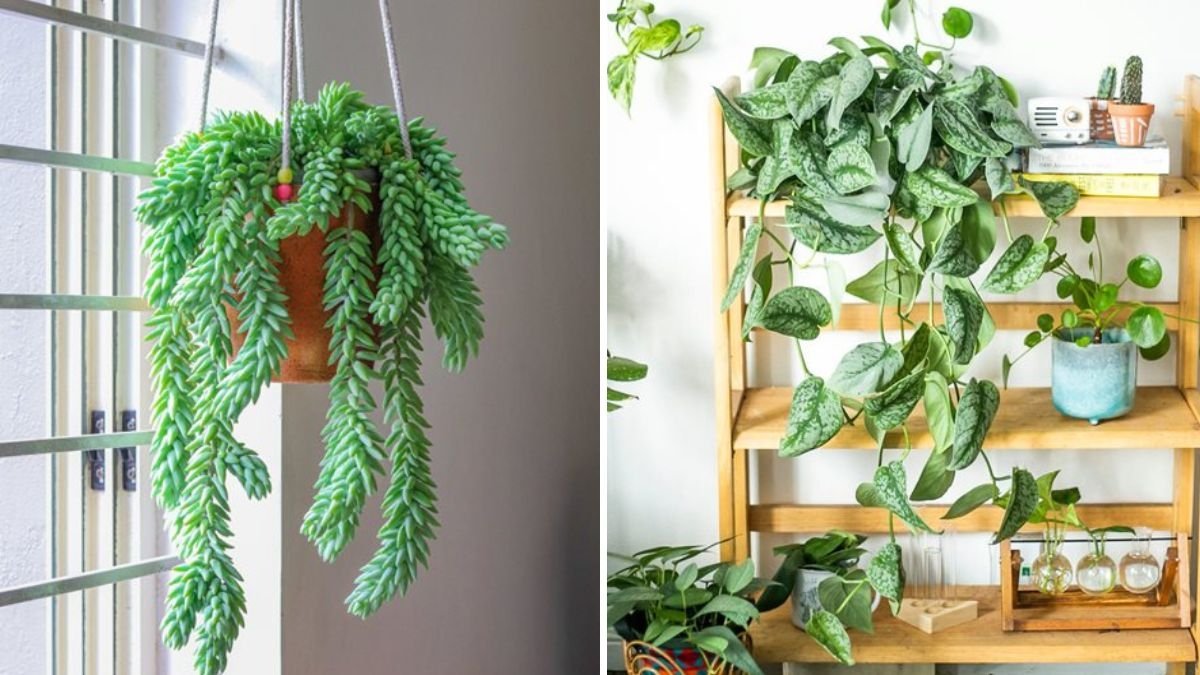




Leave A Comment